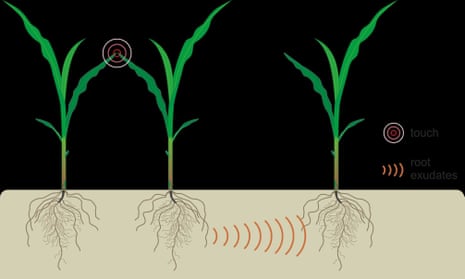Plants use their roots to “listen in” on their neighbours, according to research that adds to evidence that plants have their own unique forms of communication.
The study found that plants in a crowded environment secrete chemicals into the soil that prompt their neighbours to grow more aggressively, presumably to avoid being left in the shade.
“If we have a problem with our neighbours, we can move flat,” said Velemir Ninkovic, an ecologist at the Swedish University of Agricultural Sciences in Uppsala and lead author. “Plants can’t do that. They’ve accepted that and they use signals to avoid competing situations and to prepare for future competition.”
Previously, scientists have shown that when plant leaves are touched as they brush up against the leaves and branches of neighbours they alter their growth strategies. Mature trees have been seen to experience “canopy shyness” and rein in their growth under crowded conditions. Others, take a more combative approach, diverting resources from root growth to expand more rapidly above ground.
The latest study reveals that this behaviour is driven, not just by mechanical cues picked up by leaves, but by chemical secretions in the soil.
The study, published in the journal Plos One, focussed on corn seedlings, which tend to boost growth in a stressed environment. Ninkovic and colleagues simulated the touch of a nearby plant by stroking the leaves for a minute each day using a makeup brush.
When they then removed the plant and placed a new one its growth solution they found that the new plant also diverted its resources to growing more leaves and fewer roots. Seedlings that were planted in growth solution that had previously hosted untouched plants did not show this pattern.
The possibility that plants communicate has surfaced periodically as a crackpot idea – in the 1980s it was suggested that trees send out electrical pulses, called W-waves, when their neighbours were chopped down. However, in recent years, fresh evidence has emerged that plants are constantly sending and receiving signals that scientists are now learning to eavesdrop on. As well as canopy shyness and aggression, plants warn their neighbours of impending aphid attacks via thread-like filaments of fungi that connect roots in complex communication networks and are able to detect whether they are surrounded by “strangers” or their own kin.
